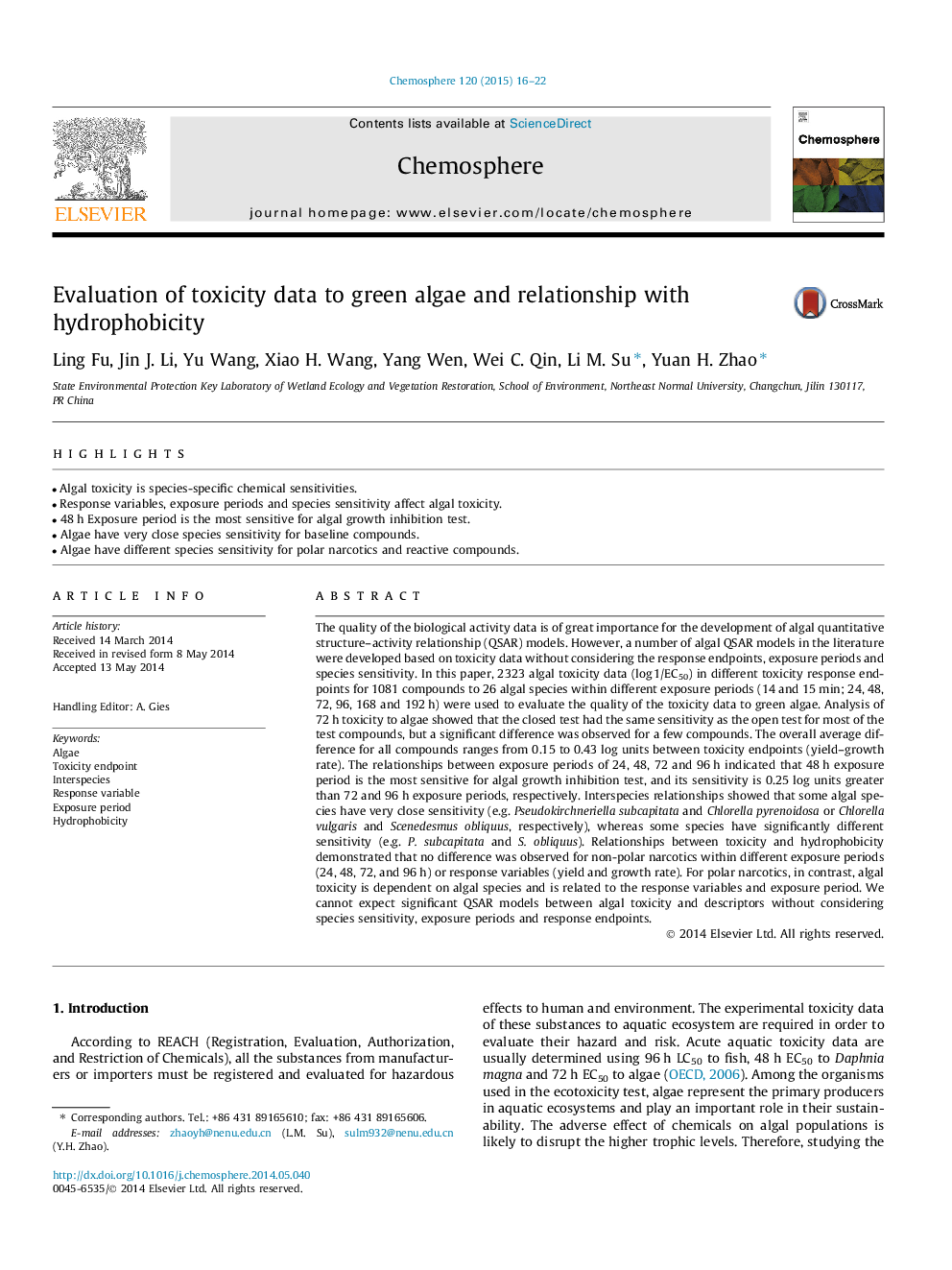| Article ID | Journal | Published Year | Pages | File Type |
|---|---|---|---|---|
| 6308105 | Chemosphere | 2015 | 7 Pages |
Abstract
The quality of the biological activity data is of great importance for the development of algal quantitative structure-activity relationship (QSAR) models. However, a number of algal QSAR models in the literature were developed based on toxicity data without considering the response endpoints, exposure periods and species sensitivity. In this paper, 2323 algal toxicity data (log 1/EC50) in different toxicity response endpoints for 1081 compounds to 26 algal species within different exposure periods (14 and 15 min; 24, 48, 72, 96, 168 and 192 h) were used to evaluate the quality of the toxicity data to green algae. Analysis of 72 h toxicity to algae showed that the closed test had the same sensitivity as the open test for most of the test compounds, but a significant difference was observed for a few compounds. The overall average difference for all compounds ranges from 0.15 to 0.43 log units between toxicity endpoints (yield-growth rate). The relationships between exposure periods of 24, 48, 72 and 96 h indicated that 48 h exposure period is the most sensitive for algal growth inhibition test, and its sensitivity is 0.25 log units greater than 72 and 96 h exposure periods, respectively. Interspecies relationships showed that some algal species have very close sensitivity (e.g. Pseudokirchneriella subcapitata and Chlorella pyrenoidosa or Chlorella vulgaris and Scenedesmus obliquus, respectively), whereas some species have significantly different sensitivity (e.g. P. subcapitata and S. obliquus). Relationships between toxicity and hydrophobicity demonstrated that no difference was observed for non-polar narcotics within different exposure periods (24, 48, 72, and 96 h) or response variables (yield and growth rate). For polar narcotics, in contrast, algal toxicity is dependent on algal species and is related to the response variables and exposure period. We cannot expect significant QSAR models between algal toxicity and descriptors without considering species sensitivity, exposure periods and response endpoints.
Related Topics
Life Sciences
Environmental Science
Environmental Chemistry
Authors
Ling Fu, Jin J. Li, Yu Wang, Xiao H. Wang, Yang Wen, Wei C. Qin, Li M. Su, Yuan H. Zhao,
